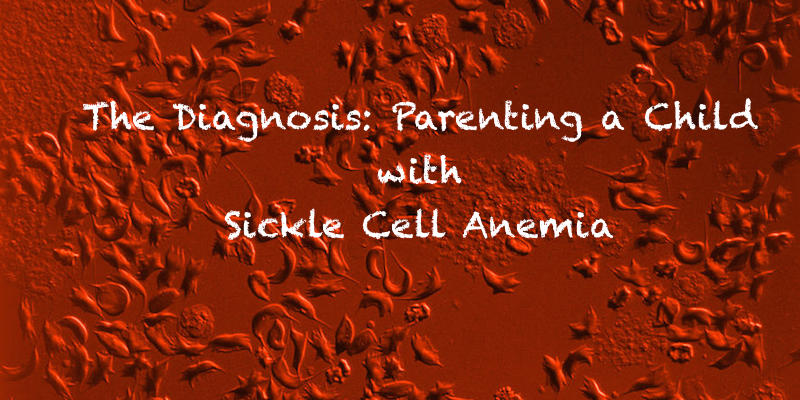There are many myths associated with sickle cell disease, but today we will debunk a few and provide people with a better understanding of what sickle cell is and how it affects different types of people’s bodies.
Myth #1
Only black people get the disease. Debunked – According to the National Institutes of Health (NIH) “Sickle cell anemia is most common in people whose families come from Africa, South or Central America (especially Panama), Caribbean islands, Mediterranean countries (such as Turkey, Greece, and Italy), India, and Saudi Arabia” (source). In fact, the 2009 Sickle Cell Poster Child, Giovanna Poli, is white.
Myth #2
No cure exists. Debunked – The first patient cured of sickle cell disease was an eight year old named Kimberlin at St Jude Children’s Research Hospital. How was she cured?
“Stem cell transplant — is the only cure for sickle cell disease.
- The cure was first performed successfully in 1983, when a St. Jude patient with leukemia and sickle cell disease received a bone marrow transplant. The procedure cured both diseases.
- During a transplant, the patient’s bone marrow is replaced with marrow from a person who does not have sickle cell disease. The transplanted cells grow into healthy blood cells.
- Even though bone marrow transplant is a cure for sickle cell disease, its use is limited because of the problems in finding a matched donor, and the complications associated with transplant.
- Some types of stem cell transplants may be called ‘bone marrow transplants’ because the cells come from the donor’s bone marrow.” (Source)
If there’s a cure, then why doesn’t everyone with the disease receive a stem cell transplant? This answer is complex, but finding exact stem cell matches for each patient is difficult and very costly.
Myth #3
Sickle Cell Disease is the same for the patients diagnosed. Debunked – Just like with any disease, each person’s body reacts a little different, so what may work to treat one patient may not be a good treatment for others. Additionally, there are different types of Sickle Cell Disorders that a person can have. The 3 most common types are:
“Hemoglobin SS Disease
Hemoglobin SS disease is the most common type of sickle cell disease. It occurs when you inherit copies of the hemoglobin S gene from both parents. This forms hemoglobin known as Hb SS.
Hemoglobin SC Disease
Hemoglobin SC disease is the second most common type of sickle cell disease. It occurs when you inherit the Hb C gene from one parent and the Hb S gene from the other. Individuals with Hb SC have similar symptoms to individuals with Hb SS. However, the anemia is less severe.
Hemoglobin SB+ (Beta) Thalassemia
Hemoglobin SB+ (Beta) thalassemia affects beta globin gene production. The size of the red blood cell is reduced because less beta protein is made. If inherited with the Hb S gene, you will have Hemoglobin S Beta thalassemia.
Beta-Zero Thalassemia
Beta-Zero thalassemia is the second type of beta thalassemia. It has similar symptoms to Hb SS anemia. However, sometimes the symptoms of beta-zero thalassemia are more severe. It is associated with a poorer prognosis.” (Source).
Myth #4
Medication is the only way to manage the disease. Debunked – While there are no 100% guaranteed methods outside of being cured of sickle cell, there are lifestyle changes that have helped many people lessen their number of crises and live a better quality of life. The New York Times published an article on March 14, 2013, that outlines prevention and lifestyle changes. The section on food reads,
“Foods. Good nutrition, while essential for anyone, is critical for patients with sickle cell disease. Some dietary recommendations include:
- Fluids are number one in importance. The patient should drink as much water as possible each day to prevent dehydration.
- Diet should provide adequate calories, protein, fats, and vitamins and minerals. Patients and families should discuss vitamin and mineral supplements with their doctors and nurses.
- Some studies claim that omega-three fatty acids, found in fish and soybean oil as well as dietary supplements, might make red blood cell membranes less fragile and possibly less likely to sickle, although no studies have proven this definitively” (source).
Myth #5
Sickle Cell is a disease other people can catch. Debunked – Sickle cell disease is NOT contagious! It is also not a disease that people will grow out of having within their body. The only way to get sickle cell is to be born with it. Because the disease is genetic it can only be confirmed in people who received mutated genes from their parents.
“In order for you or your child to inherit sickle cell anemia, both parents must have either sickle cell anemia (two sickle cell genes) or sickle cell trait (one sickle cell gene)” (source).
References: Video Credit: Mellolab. Youtube.com. Suffering In SIlence [SIC] – Bringing Awareness to Sickle Cell Anemia. Retrieved September 14, 2014 from http://youtu.be/eHmSN326bGA. This is post #14 in raising awareness about Sickle Cell.
- September is National Sickle Cell Awareness Month
- #30forSickleCell Know Your Sickle Cell Trait Status
- Sickle Cell – A Parent’s Perspective #30forSickleCell
- Sickle Cell – A Hematologist’s Perspective
- Sickle Cell: A Firsthand Look at T.J. Brown’s Holistic Experience
- Sickle Cell: Erase the Shame and End the Silence #30forSickleCell
- How Can Family Members Support Someone With Sickle Cell? #30forSickleCell
- Can a Biracial Person Have Sickle Cell Anemia? #30forSickleCell


